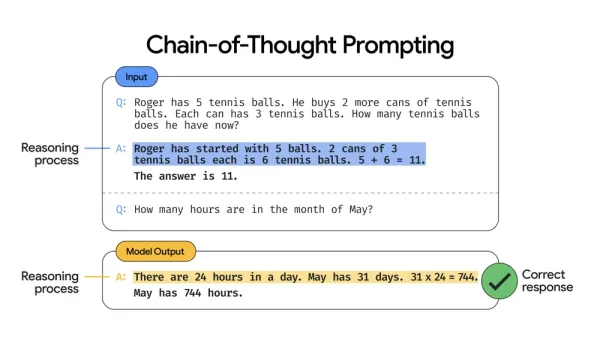Unveiling the Power of SafeTensors: Safeguarding Your Data with Confidence
SafeTensors is a new and innovative solution to the problem of data protection. It's easy to use and it provides strong encryption. As more and more businesses start to use AI, SafeTensors is likely to become an essential tool for protecting sensitive data.

Introduction
Imagine you're a small business owner who has developed a new app that relies on artificial intelligence (AI) to provide personalized recommendations to your customers. This app uses a lot of data, including your customers' purchase history and browsing habits. While this data is essential for the app to work properly, it's also sensitive information that you need to protect.
That's where SafeTensors comes in. SafeTensors are a file type that encrypts your data so that it can only be accessed by authorized users. This encryption makes it much more difficult for hackers to steal or misuse your data.
With SafeTensors, you can encrypt your data at rest and in transit, making it virtually impossible for unauthorized users to access it. Even if your data is stolen, it will be useless to the thieves without the decryption key.
SafeTensors are also tamper-proof, meaning that even if someone tries to modify your data, the SafeTensor will automatically detect the changes and prevent them from being saved.
Why SafeTensors?
There are a number of other solutions available for protecting data in AI applications. However, SafeTensors offers a number of advantages over these other solutions.
First, SafeTensors are very easy to use. You simply need to convert your data to SafeTensors format and then use the SafeTensors libraries to access and process your data.
Second, SafeTensors are very efficient. The encryption and decryption process is very fast, so there is no significant performance penalty for using SafeTensors.
Third, SafeTensors are very secure. The cryptographic techniques used in SafeTensors are state-of-the-art and have been thoroughly tested and audited.
Finally, SafeTensors are very versatile. SafeTensors can be used to protect a wide variety of data types, including images, videos, text, and audio.
Understanding SafeTensors: Types and Encryption
SafeTensors use a combination of cryptographic techniques to encrypt and protect your data. The first layer of encryption is applied at the file level. This means that the entire SafeTensor file is encrypted, making it impossible to read without the decryption key.
The second layer of encryption is applied at the individual data point level. This means that each individual data point within the SafeTensor is also encrypted. This adds an extra layer of security and makes it even more difficult for unauthorized users to access your data.
Safetensors are usually categorized into below 2 parts.
Private SafeTensors: These are designed for situations where data privacy is paramount. Private SafeTensors use advanced encryption techniques to ensure that data remains confidential and secure, even when shared with collaborators or third-party services.
Homomorphic SafeTensors: Homomorphic encryption allows you to perform computations on encrypted data without the need to decrypt it first. This type of SafeTensor is ideal for scenarios where data analysis and computation are critical while maintaining privacy.
How to Implement SafeTensors
Implementing SafeTensors may sound complex, but fear not; we'll guide you through the process with step-by-step examples.
Step 1: Installation
First, you need to install the SafeTensors library in your development environment. You can easily do this using Python's package manager, pip.
pip install safetensorsStep 2: Importing SafeTensors
Next, import the SafeTensors library into your project.
import safetensors as stStep 3: Creating a Private SafeTensor
Let's say you have a dataset containing sensitive customer information. You can create a Private SafeTensor as follows:
#Load your dataset
data = [12, 15, 18, 20, 22, 25]
#Create a Private SafeTensor
private_data = st.Private(data)Step 4: Performing Secure Computations
Now, you can perform secure computations on the Private SafeTensor without revealing the underlying data:
#Calculate the mean without exposing individual values
mean = private_data.mean()
print("Mean:", mean)Step 5: Decryption (if needed)
If you need to access the original data, you can decrypt the Private SafeTensor:
decrypted_data = private_data.decrypt()
print("Decrypted Data:", decrypted_data)
Usage
Imagine you're a healthcare company that wants to develop an AI-powered system to diagnose diseases more accurately. To train this system, you need to collect a massive dataset of medical images and patient data. But this data is incredibly sensitive, so you need to make sure it's protected.
SafeTensors would allow you to encrypt this data so that it's completely secure, even if it's stolen or breached. This would give you the confidence to develop your AI system without putting your patients' privacy at risk.
Comparison with Other Solutions
SafeTensors stand out in the realm of data security. While traditional encryption methods provide data protection, they often hinder data usability. SafeTensors, on the other hand, strike a delicate balance, allowing secure computation without exposing sensitive information.
Conclusion
SafeTensors is still under development, but it has the potential to revolutionize the way we use and share data. By making it possible to protect sensitive data without sacrificing its utility, SafeTensors could open up new possibilities for AI and data-driven innovation.
Thanks for reading. If you like the article do consider checking other.




